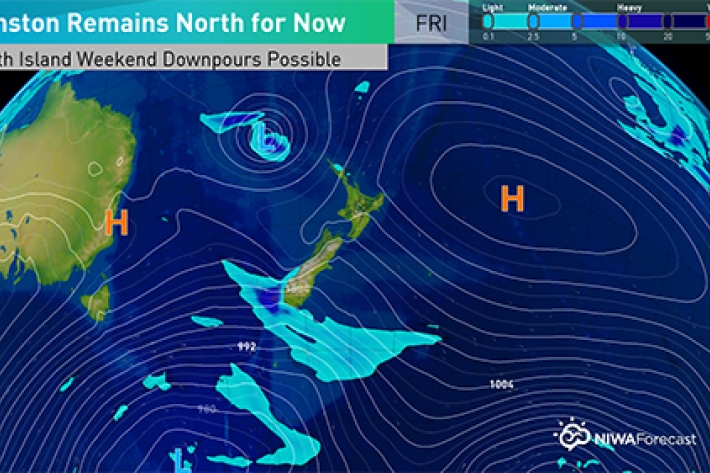-

NIWA's Hotspot Watch
Hotspot26 February 2016On the North Island, soil moisture levels have generally remained the same or increased when compared to this time last week. -

Scientists get boost to combat invasive marine pests
News article25 February 2016Work to protect New Zealand waters from an increasing number of invasive biological pests has received a funding boost to fight their spread. -

Tropical Cyclone Winston Update #3
News article24 February 2016Tropical Cyclone Winston is showing some signs of weakening as of this morning, now located about 600km southeast of Vanuatu’s southernmost islands. -

Tropical Cyclone Winston Update #2
News article23 February 2016NIWA meteorologists continue to monitor the progression of Tropical Cyclone Winston. -

NIWA's Hotspot Watch
Hotspot19 February 2016Changes in soil moisture levels across the North Island vary when compared to this time last week, with a mixture of both increased and decreased moisture. -

Tropical cyclone update #2
News article15 February 2016Niwa meteorologists continue to cast a watchful eye over two strengthening tropical cyclones in the South Pacific. -

NIWA's Hotspot Watch
Hotspot12 February 2016A weekly update describing soil moisture across the country to help assess whether severely to extremely dry conditions are occurring or imminent. -

Tropical cyclone update #1
News article11 February 2016NIWA meteorologists are monitoring the potential for ex-tropical cyclones to affect New Zealand early next week. -

The search for yellow octopus
News article09 February 2016One of the ocean’s most elusive critters is about to meet its match as NIWA scientists voyage south hoping to film them in action – and bring a few samples home. -

Improving seasonal climate forecasts
Feature story08 February 2016NIWA’s climate scientists are working to improve seasonal climate forecasts. -

NIWA's Hotspot Watch
Hotspot05 February 2016A weekly update describing soil moisture across the country to help assess whether severely to extremely dry conditions are occurring or imminent. -

Meeting the challenge of ocean acidification
Feature story01 February 2016New Zealand’s answer to ocean acidification is a model of the ‘best team’ approach – when organisations pool talent and resources to find solutions to national, or global, issues.]
